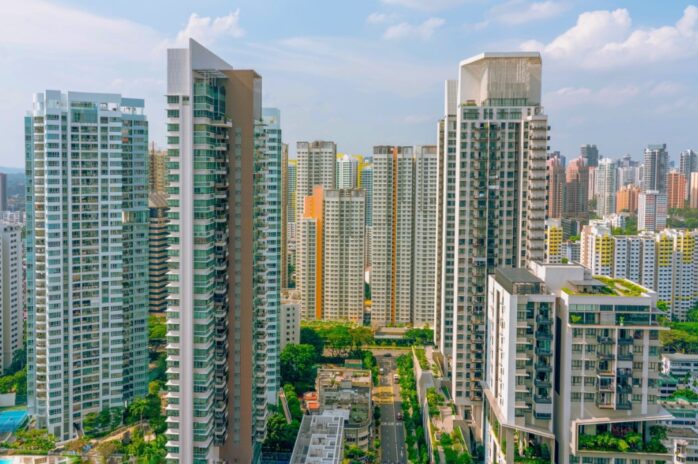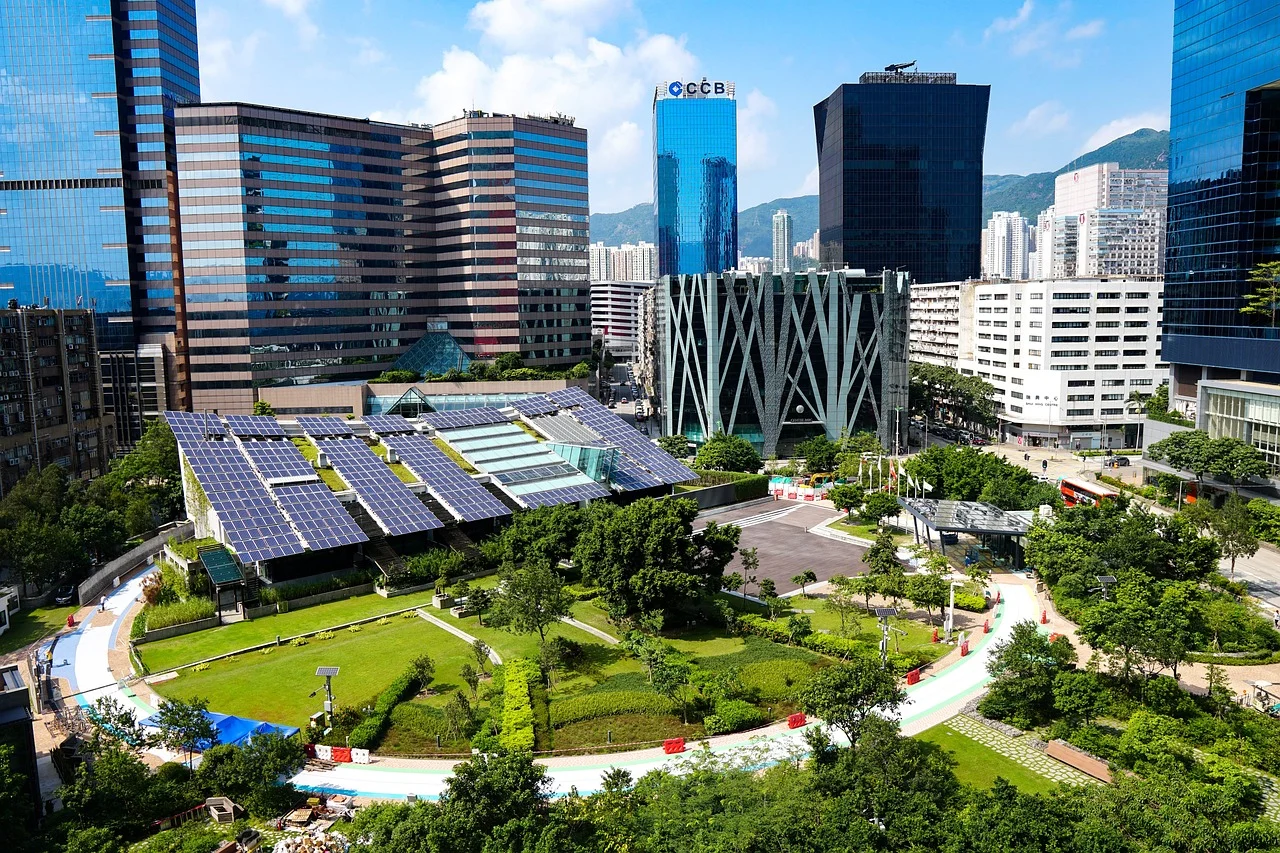
If you’re considering investing in the Singapore property market in 2025, you’re likely wondering if it’s the right time to buy. With a mix of stabilizing prices, new launches, and favorable financing conditions, the market presents both opportunities and challenges.
Here are the key highlights:
- Market stabilization ─ Property prices are expected to rise moderately by 4%–7%.
- New launches ─ A surge in new projects offers buyers a wide range of options.
- Financing conditions ─ Low interest rates make property purchases more affordable.
- Government policies ─ Measures aim to balance affordability and curb speculation.
Navigating the Market ─ A Look at Upcoming Projects
As you explore the Singapore property market, it’s essential to consider upcoming projects like Terra Hill, a joint venture between Hoi Hup Realty and Sunway Group. This project showcases the quality and excellence that these developers bring to the table, having won numerous awards for their workmanship. Terra Hill, formerly known as Flynn Park, is a testament to the innovative and high-quality developments that are shaping the market in 2025.
When evaluating such projects, it’s crucial to assess not just the developers’ reputation but also the project’s location, amenities, and potential for growth. For instance, Terra Hill benefits from its strategic location, offering residents easy access to key amenities and transport links. This kind of strategic positioning can significantly impact the property’s value over time.

Market Trends ─ What to Expect in 2025
The Singapore property market is entering a phase of sustainable growth, moving away from rapid price hikes. Several key trends are shaping this landscape:
- Stable price growth ─ Private property prices are projected to increase by 4%–7%, offering consistent returns for investors.
- Demand drivers ─ HDB upgraders and new household formations are significant demand drivers, ensuring a steady need for residential properties.
- Foreign interest ─ Despite high Additional Buyer’s Stamp Duty (ABSD), foreign investors remain interested in luxury properties, particularly in the Core Central Region.
These trends suggest that 2025 will be a balanced year for both buyers and sellers, with reduced market volatility.
Economic Drivers and Government Policies
The economic fundamentals in Singapore are strong, with GDP growth projected at 2.8% and stable employment rates. These factors contribute to a favorable environment for property investments. Government policies play a crucial role in maintaining market stability:
- Interest rates ─ Low interest rates enhance affordability for homebuyers.
- Supply and demand balance ─ Efforts to increase housing supply help meet growing demand.
- Sustainability initiatives ─ Eco-friendly features are becoming increasingly important in new developments.
These policies ensure that the market remains attractive for both residents and investors.

Tips for Families Investing in Property
If you’re a family looking to invest in property, here are some tips to keep in mind:
- Research thoroughly ─ Understand the market trends and the specific area you’re interested in.
- Consider long-term value ─ Look for properties with potential for long-term appreciation.
- Assess financing options ─ Take advantage of low interest rates to secure favorable mortgage terms.
- Prioritize sustainability ─ Eco-friendly features can increase property value and appeal.
By following these tips, families can make informed decisions that align with their financial goals.
The Role of Sustainability in Property Investments
Sustainability is becoming a cornerstone of the property market, with both developers and buyers prioritizing eco-friendly features. This trend is driven by government incentives and consumer demand for green living. Properties with sustainable features not only offer a better quality of life but also tend to appreciate in value over time.
In 2025, expect to see more developments incorporating green materials and smart home technology to reduce carbon emissions. This shift towards sustainability is not just about environmental benefits; it’s also a savvy investment strategy.

Upcoming Growth Areas
Several areas in Singapore are poised for significant growth due to upcoming infrastructure projects and improved connectivity. These include regions like the Greater Southern Waterfront, Tengah, and Punggol Digital District. Investing in these areas can offer substantial returns as they develop:
- Infrastructure development ─ New transport links and amenities enhance property values.
- Urban planning ─ Strategic urban planning ensures sustainable and livable environments.
- Economic growth ─ Proximity to growth zones can lead to increased property appreciation.
Families looking to invest should consider these emerging areas for their potential long-term benefits.
The Luxury Market and Foreign Investment
Despite high ABSD rates, the luxury property market continues to attract foreign investors, particularly in the Core Central Region. This demand is driven by the region’s top-notch amenities and legal safeguards. However, it’s essential to consider the additional costs and regulations when investing in luxury properties:
- Additional buyer’s stamp duty (ABSD) ─ A 60% ABSD applies to foreign buyers.
- Market volatility ─ Luxury markets can be more susceptible to economic fluctuations.
- Long-term potential ─ Despite challenges, luxury properties often offer stable long-term returns.
Foreign investors should carefully weigh these factors before making a decision.

Rental Market Outlook
The rental market in prime locations like the CBD and Orchard Road remains strong, offering attractive returns for investors. This demand is driven by the limited supply of rental properties in these areas and the consistent influx of expatriates and professionals:
- High demand ─ Prime locations continue to attract high rental income.
- Limited supply ─ The scarcity of rental properties in these areas supports rental prices.
- Investment potential ─ Investors can benefit from stable rental income and potential property appreciation.
Families considering rental investments should focus on these high-demand areas.
Managing Risks in Property Investments
Investing in property always involves risks, from market fluctuations to developer reliability. Here are some strategies to mitigate these risks:
- Diversify your portfolio ─ Spread investments across different types of properties or regions.
- Monitor market trends ─ Stay informed about market changes and adjust your strategy accordingly.
- Choose reliable developers ─ Research the developer’s track record and reputation.
- Consider insurance options ─ Look into property insurance to protect against unforeseen events.
By managing these risks effectively, families can ensure their investments remain secure and profitable.

Conclusion
In conclusion, the Singapore property market in 2025 presents a mix of opportunities and challenges. With stable price growth, favorable financing conditions, and a focus on sustainability, it’s an exciting time for both buyers and investors.
However, it’s crucial to navigate the market with a clear understanding of trends, policies, and potential risks. By doing so, families can make informed decisions that align with their financial goals and lifestyle preferences.








